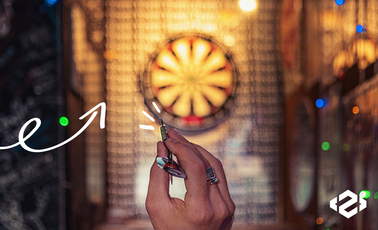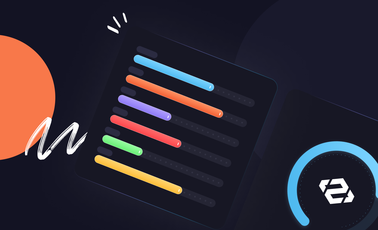The Most Common Voting Mechanisms Used by DAOs
Introduction
DAO is political. Its vision extends from reforming the current economic system to revolutionizing society. How it should be governed is one of the hottest topics in the tech world nowadays. DAO is a construct with many political implications, and governance is a political issue in and of itself as well. Voting is at the center of all this. Members of DAO communities have been trying to balance different concerns like authority, inclusivity, speed, scalability, and economic interests and come up with an optimal method of decision-making. None of the voting systems we will talk about below offer a silver bullet to solve all problems. They all come with their pros and cons, and most of the time, multiple systems will be used together for a better solution. Here's a look at the most common voting systems in DAOs:
Token-based quorum voting
Quorum voting is the most basic mechanism used for decision-making in DAOs. It requires a predetermined level of voters to vote in favor of a proposal for it to pass. Determining the quorum level can be tricky, though: Too high a quorum level stifles the decision-making process, and the quality of decisions made suffers when the threshold is set too low.
Quorum voting has serious challenges. People hoarding tokens get to enjoy more voting power in this system. Wealthy members can even bribe others for support on a particular proposal. Then, there is the issue of conflicts of interest: Some people prioritize short-term profit with an eye to selling their tokens for a profit, while others emphasize values the DAO is built around. Also, people don't look too enthusiastic about participating in voting despite all the talk about decentralization and a new form of bottom governance. The percentage of members voting on popular platforms like DAOStack and Aragon are below 10 percent, which allows organized groups to dominate the voting process.
The low participation rate draws attention to other voting methods such as relative quorum voting, whereby a proposal passes when 51 percent of voters participating vote in favor. This technique is not without its flaws, either. BProtocol's coup on the MakerDAO platform in October 2020 is a good case in point. BProtocol used a flash-loan to borrow $7 million worth of MKR tokens to manipulate a vote, and then returned the tokens after the vote in the same time-block, exposing how vulnerable this new experiment in democracy can be.
Wary of these shortcomings, Snapshot and Orange have joined forces to introduce a reputation-based voting system, which will take into account the contributions a voter made. This initiative aims to wrestle power from the hands of speculators possessing great numbers of tokens and reward voters based on their track record, giving highly-engaged voters a portable reputation they can transfer to other platforms.
Quadratic voting
In quadratic voting (QV), voters are allowed to buy tokens and acquire greater voting power. The voting power increases by the square of the number of tokens a voter has. So, while the representative impact of a single vote is one, it increases to four for two votes and nine for three votes. This system comes with its pros and cons: It discourages people without a vested interest from voting on an issue and gives a minority a more prominent voice on issues they are passionate about. However, QV is bound to bring about a plutocracy where voting power becomes a function of wealth. This situation contradicts the principles of modern democracy and is in stark contrast to the radical democracy that fans of blockchain technology preach.
Replacing money with tokens is an alternative to using real money for buying votes. To understand how this alternative model works, let's assume every member is assigned a credit of 100 votes for ten tokens. A voter can choose to spread her tokens across different proposals (by putting two tokens on a proposal for an impact of four votes, three tokens on another for an impact of nine, and five tokens on a third proposal for an impact of 25). She can even put all ten tokens on a single proposal and use up all her credits. This practice is akin to buying collective attention for a proposal you back and increasing its visibility.
Conviction voting
Conviction voting (CV) is a mechanism based on the continuous expression of the aggregated preference of a community. In this technique, the weight of a vote increases the longer it remains unchanged. Changing votes is always possible, but it comes at the price of sacrificing the weight your preference has accumulated up to that point. CV prevents people who happen to have large stakes from overpowering the minority opinion as the system rewards having faith in a proposal rather than sheer wealth. It is immune to last-minute ambushes whereby a group of voters make a concerted effort to swing the outcome in their favor just before the polls close.
Holographic consensus
The goal of a DAO is to realize the global opinion of the DAO (the theoretical point of reference denoting the ultimate decision that would be made in ideal conditions) by committing the least amount of resources. There are two challenges at play here: The scalability of the voting process (frequency) and how much the outcome represents the global opinion of the DAO. This phenomenon is known as the scalability-resilience dilemma. Measures taken to ensure high levels of participation in the voting process hurt the scalability of the process. Too little participation, on the other hand, may result in bad proposals ending up passing.
In order to achieve maximum scalability, the global opinion of the DAO has to be achieved with minimum mobilization of voting power. The holographic consensus (HC) method aims to solve this conundrum through highly representative local decisions. These decisions compete in a prediction market: While the DAO downstakes on each proposal, members of the DAO put money on proposals they think will win. The backers of the winning proposals are financially rewarded while the money DAO pays them is considered as some kind of administrative expense to ensure the efficient working of the DAO. Although it optimizes scalability and resilience, HC is quite complex and not very democratic as the cost of participation can be steep for some people.
Multi-sig voting
Is it possible to have a happy medium between a centralized authority, which can take swift action but not be trusted to make the right decision at all times, and a decentralized, collective decision-making mechanism, which takes too long and is not scalable? Multi-signature voting technique is claimed to be that happy medium. It involves a group of DAO members signing off on a transaction to take place or a proposal to pass. A predetermined rule stipulates the members who will have a private key and the minimum number of key holders needed for a transaction to be approved. So, in a group with nine private keys, if the preset rule requires six votes for a proposal to pass, six key holders agreeing on a decision will be enough to govern the DAO.
Multi-sig voting definitely comes in handy in an emergency where acting fast can save the day. The cause could be a security hole, a bug, or a much-needed update to the system. Looking for a quorum or running more sophisticated techniques like conviction voting or holographic consensus would be impractical in such cases and could jeopardize the existence of the DAO. Multi-sig voting ensures that necessary measures will be taken swiftly. However, there is always the risk that multi-sig key holders can collude to make decisions against the interests of the wider DAO community.
Conclusion
Decision-making in DAOs take place along a spectrum and is rife with trade-offs. If you want to act fast, you have to give up some of the representative character of your decisions. If you bake new rules and sophisticated mechanisms in the system to immunize it against possible attacks, you sacrifice the amateur, bottom-up zeal that makes a DAO so unique.
The first quarter of the twenty-first century is almost over, and it feels increasingly like the last quarter of the eighteenth century in France and North America. People are full of anger towards the ancien régime and have the will to change it, but they are not sure what to replace it with. Back then, some of the brightest minds of the eighteenth century reflected on a new way of governance; some even lost their lives for their ideas after overthrowing the existing rule. Dreaming of a country without a king was one thing; governing such a country was another. The real challenge turned out to be building a new society without a king out of people who had never lived without a king.
People fighting over the best way to make decisions in DAOs know that more is on the line than just who gets to decide in an online community. They know they might be building the society of the future. We better educate ourselves about their ways and techniques. It's a new age, people.




 Please
fill out this field
Please
fill out this field









